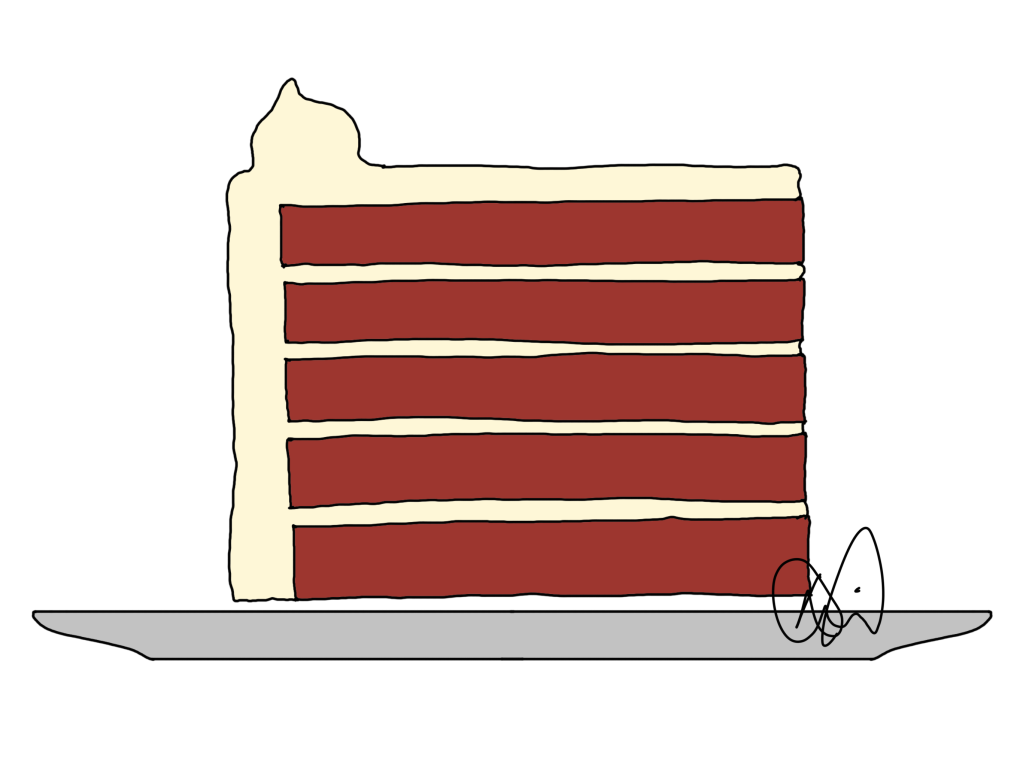Periodically my obsession with Red Velvet cake (or Waldorf Astoria Cake, as it is sometimes known) leaves the safety of my personal life and comes across the border into my work. A few years ago, struggling to explain the value of layers of light in ways that would make it easy remember, I realized that I like my lighting like I like my Red Velvet cake- in layers. No one wants a Red Velvet layer cake with only one layer, it just upsets the balance of icing and cake. We make it with four layers once a year for my birthday, but it stays with me throughout the year as a five-layer memory device for good lighting.
Do we need a new way to talk about light?
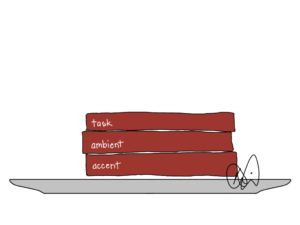
The majority of discussions about lighting are boiled down to the point of doubtful utility. We, as a profession, attempt to simplify the biology, geometry, and psychology of light into something we can force on our clients. In school or on our first jobs, most of us will hear about three layers of light: task, ambient, and accent.
These three types or functions of light are great to have in a project, but our relentless focus on them stifles innovation and disconnects us from the myriad of ways light can help us live better lives. Task, ambient, and accent are merely tools, attempted answers to the question “what light do we need?”
We should be asking instead “why do we need light” or “how can light help us?” Our focus on task, ambient and accent is a bit like saying “great architecture consists of 2×4’s, housewrap, and granite countertops.” While all of these may be components of a good home, a house built with only these three components would be a disaster. To build your home well, you need a more complete picture. To light your home well, you need a more complete picture than task, ambient, and accent will provide.
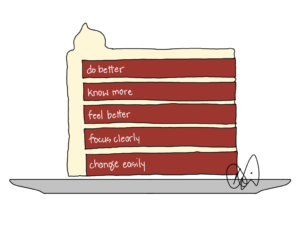
Light can help us…how?
I dreamed up a new language of light for my work by first reframing the question. Instead of “what light do we need,” I began to explore the question “why do we need light?” This led me to throw out task, ambient, and accent as discussion points with clients and replace them with what I call the five promises of light. The five promises sought to answer the fundamental “why” questions as they also address the question “how can light help us?”
DO BETTER
Light can help us see what we are doing, so we can do it more safely, easily, even better. This is the most basic benefit of light but sadly too often the only benefit considered. In many cases, we add task lighting to see what we are doing…and then stop, leaving at least four more promises on the table.
KNOW MORE
Light can help us know where we are, where we are going, who we are with, and what they are feeling by revealing the world around us. We need light all around us to help us understand our place in space, light for our paths and roads and halls, and light on the faces of our companions. Without this light, we may go in the wrong direction or miss the subtle cues that reveal the true emotions of our friends and family.
FEEL BETTER
Light can help us feel more alert in the morning, more relaxed in the evening, and feel better at every moment in between. Light- the right light- can even help us sleep more deeply, the resulting rest improving our memory and cognition. We may even heal faster, using fewer pain medications and leaving the hospital sooner, when we have the right light. We can survive with task light, but we need different light to thrive.
FOCUS CLEARLY
Light can help us focus our attention on what is important to us, whether that be a timber-framed cathedral ceiling, a crayon drawing from a child, a priceless piece of art, or a sunset outdoors. We are biologically wired to look at what is brightest. When that is a fixture on the ceiling or a countertop in the kitchen, our attention may be drawn away from what we truly value.
CHANGE EASILY
Light can help us adapt to the myriad of changes that we confront daily and over the course of our lives, from changes in time of day and season to changes in mood and function. Light for relaxing is not the same as light for taking an exam. Light for a teenager is not the same as light for a senior. Light for a joyful occasion is not the same as light for relaxation.
For a few years now, our team has led with these five promises of light. Lately I have begun to reconsider two more ideas, one a recycled promise from my early exploration and the other from the opposite of light.
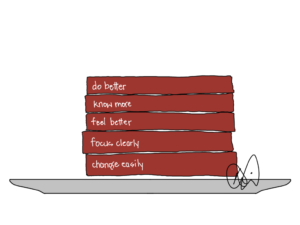
TELL OUR STORY
Light can help us tell our stories, revealing who we are and what we value. This is light that is unique to each of us, different for every home. It could be a truly creative solution that supports our self-view as “cutting edge” or “timelessly elegant.” It could be light that reveals our love for travel or outdoor activities or drama. This could be the sixth promise of light, but it may also be a result of how we use the other five promises of light, a style rather than substance. Or, in Red Velvet Cake Theory (RVCT), this “extra” is the icing on the cake.
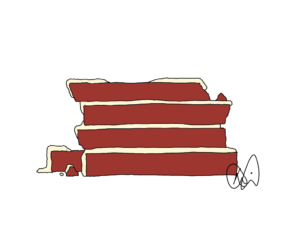
REST DEEPLY
Light can help us live better, but only when there is a foundation of darkness to build upon. Great lighting, if never turned off, will cease to help us and begin to hurt us. Sleep deprivation, disturbed sleep, or shallow sleep will harm both our bodies and our minds. In other words, without darkness, light becomes toxic.
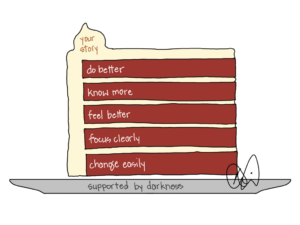
A way to remember…
The Red Velvet Cake Theoryis simply a way for me to remember these benefits, a method for talking about the value of these promises as a whole, a sum of parts. And it reminds me of red velvet cake, which is enough to put a smile on my face.
Red velvet cake, the way I like it, comes in alternating layers of cake and icing. Lighting, the way I like it, comes in alternating layers of promise and story. A tasty cake requires quality ingredients; great lighting requires the right tools. A good cake requires some cooking skill; good lighting requires lighting skill. I could go on, but the point of the Red Velvet Cake Theory is not to bombard others with complicated lighting ideas, but rather to simplify the concepts of great light.
THE INGREDIENTS…an executive summary
We need the right tools to do great lighting.
THE CAKE
Our lighting cake has five layers, the five promises of light. We can enjoy a cake with fewer layers, and function with fewer promises of light, but each one lost reduces the overall impact of the experience.
THE ICING
Cake itself is good, but just the right amount of icing makes it great. The five promises of light are good; that extra bit of creativity makes lighting great.
THE PLATE
Without a seemingly utilitarian plate, consuming red velvet cake would be a rather messy affair. Our lives are messy without a foundation of darkness.
Lighting designers are the cooks, the bakers, the chefs that train and practice to bake the cake.
Our stand mixers, wooden spoons, mixing bowls, and ovens are the tools we use to craft a lighting design, er, cake.
Now…why I am craving cake?
The next posts will break down the promises of light one by one.
Read all the Light Can Help Us posts HERE.
